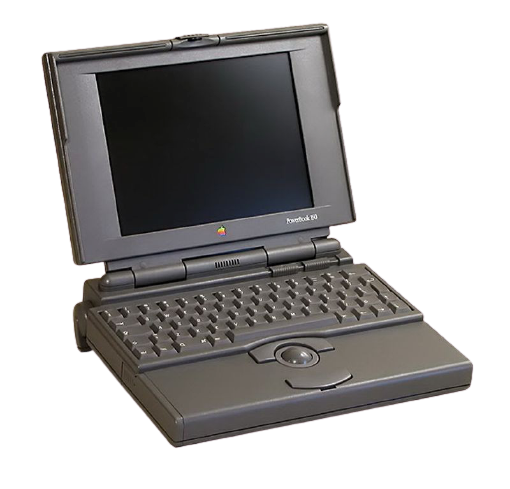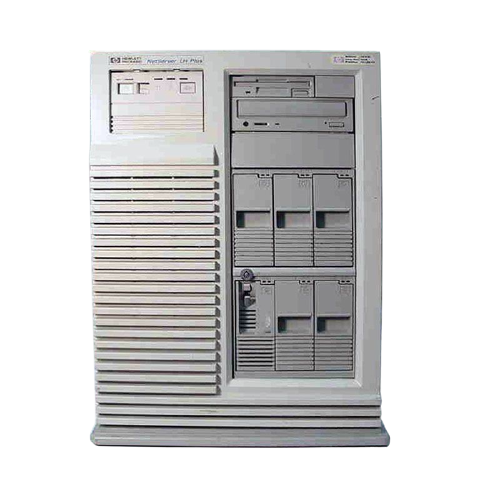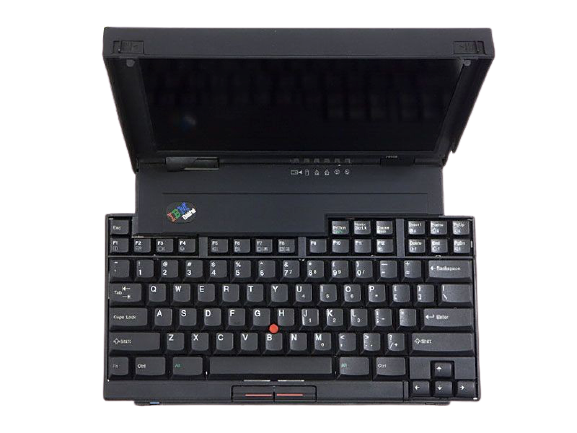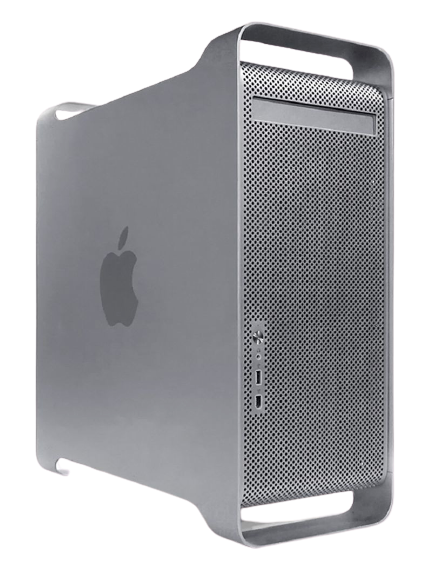1984
Apple Realesed Macintosh
Apple introduces the Macintosh with a television commercial during the 1984 Super Bowl, which plays on the theme of totalitarianism in George Orwell´s book 1984. The ad featured the destruction of “Big Brother” – a veiled reference to IBM -- through the power of personal computing found in a Macintosh. The Macintosh was the first successful mouse-driven computer with a graphical user interface and was based on the Motorola 68000 microprocessor. Its price was $2,500. Applications that came as part of the package included MacPaint, which made use of the mouse, and MacWrite, which demonstrated WYSIWYG (What You See Is What You Get) word processing.
Read More1986
Intel Introduced the 80486 Microprocessor
Intel released the 80486 microprocessor and the i860 RISC/coprocessor chip, each of which contained more than 1 million transistors. The RISC microprocessor had a 32-bit integer arithmetic and logic unit (the part of the CPU that performs operations such as addition and subtraction), a 64-bit floating-point unit, and a clock rate of 33 MHz.
The 486 chips remained similar in structure to their predecessors, the 386 chips. What set the 486 apart was its optimized instruction set, with an on-chip unified instruction and data cache and an optional on-chip floating-point unit. Combined with an enhanced bus interface unit, the microprocessor doubled the performance of the 386 without increasing the clock rate.
1991
Apple Introduced PowerBook Series
Apple's Macintosh Portable meets with little success in the marketplace and leads to a complete redesign of Apple's line of portable computers. All three PowerBooks introduced featured a built-in trackball, internal floppy drive, and palm rests, which would eventually become typical of 1990s laptop design. The PowerBook 100 was the entry-level machine, while the PowerBook 140 was more powerful and had a larger memory. The PowerBook 170 was the high-end model, featuring an active matrix display, faster processor, as well as a floating point unit. The PowerBook line of computers was discontinued in 2006.
Read More1993
Intel Realesed Pentium Microprocessor
The Pentium is the fifth generation of the ‘x86’ line of microprocessors from Intel, the basis for the IBM PC and its clones. The Pentium introduced several advances that made programs run faster such as the ability to execute several instructions at the same time and support for graphics and music.
Read More1995
IBM Realesed The ThinkPad 701C
Officially known as the Track Write, the automatically expanding full-sized keyboard used by the ThinkPad 701 is designed by inventor John Karidis. The keyboard was comprised of three roughly triangular interlocking pieces, which formed a full-sized keyboard when the laptop was opened -- resulting in a keyboard significantly wider than the case. This keyboard design was dubbed “the Butterfly.” The need for such a design was lessened as laptop screens grew wider.
Read More2000
First Camera Phone Introduced
Japan's SoftBank introduces the first camera phone, the J-Phone J-SH04; a Sharp-manufactured digital phone with integrated camera. The camera had a maximum resolution of 0.11 megapixels a 256-color display, and photos could be shared wirelessly. The J-Phone line would quickly expand, releasing a flip-phone version just a month later. Cameras would become a significant part of most phones within a year, and several countries have even passed laws regulating their use.
Read More2003
Apple Realesed PowerMac G5
With a distinctive anodized aluminum case, and hailed as the first true 64-bit personal computer, the Apple G5 is the most powerful Macintosh ever released to that point. While larger than the previous G4 towers, the G5 had comparatively limited space for expansion. Virginia Tech used more than a thousand PowerMac G5s to create the System X cluster supercomputer, rated #3 in November of that year on the world’s TOP500 fastest computers.
Read More2004
Facebook Initial Launch
Mark Zuckerberg, 23, founded Facebook while studying psychology at Harvard University. A keen computer programmer, Mr Zuckerberg had already developed a number of social-networking websites for fellow students, including Coursematch, which allowed users to view people taking their degree, and Facemash, where you could rate people's attractiveness.
In February 2004 Mr Zuckerberg launched "The facebook", as it was originally known; the name taken from the sheets of paper distributed to freshmen, profiling students and staff. Within 24 hours, 1,200 Harvard students had signed up, and after one month, over half of the undergraduate population had a profile
2005
Arduino Came to the Tech Industry
Harkening back to the hobbyist era of personal computing in the 1970s, Arduino begins as a project of the Interaction Design Institute, Ivrea, Italy. Each credit card-sized Arduino board consisted of an inexpensive microcontroller and signal connectors which made Arduinos ideal for use in any application connecting to or monitoring the outside world. The Arduino used a Java-based integrated development environment and users could access a library of programs, called “Wiring,” that allowed for simplified programming. Arduino soon became the main computer platform of the worldwide “Maker” movement.
Read More2007
Apple Realesed iPhone
Apple launches the iPhone - a combination of web browser, music player and cell phone - which could download new functionality in the form of "apps" (applications) from the online Apple store. The touchscreen enabled smartphone also had built-in GPS navigation, high-definition camera, texting, calendar, voice dictation, and weather reports.
Read More2010
The MacBook Air is Realesed
Apple introduces their first ultra notebook – a light, thin laptop with high-capacity battery. The Air incorporated many of the technologies that had been associated with Apple's MacBook line of laptops, including integrated camera, and Wi-Fi capabilities. To reduce its size, the traditional hard drive was replaced with a solid-state disk, the first mass-market computer to do so.
Read More2012
Curiosity lands on Mars
A math and physics geek at heart, I—and millions of people around the world—watched with shallow breaths and stars in our eyes as NASA’s Curiosity rover landed on Mars in 2012. As the car-sized robot began exploring the expanses of our rusty red neighbor, the NASA website went momentarily offline due to an overwhelming number of visitors.
The Curiosity rover inspired more public and private interest in space exploration, particularly around the question of life on Mars. A few years later, NASA published its official plan for human exploration and colonization of Mars called "Journey to Mars."
2014
Amazon Introduced Alexa
Amazon introduced the world to Alexa in 2014, bringing the Internet of Things (IoT) into our homes. A voice-activated virtual assistant that can perform pre-set functions out-of-the-box such as set timers, share the current weather, create lists, access Wikipedia articles, Alexa has since grown both in popularity and functionality. With thousands of Alexa Skills extending its capabilities, one can now ask Alexa to order pizza, dim the room’s lighting, jot down a shopping list and automatically place an order, and more.
Read More2016
Virtual reality makes a comeback
With major launches on the horizon, 2016 is set to be the breakthrough year for virtual reality technology - from Facebook’s Oculus Rift and HTC’s Vive to PlayStation’s Morpheus projects and Google’s Cardboard. This report explores how virtual reality will transform business, retail and education, as well as gaming and film. It also takes a look at ten sectors currently deploying VR
Read More2017
Apple Lauched iPhone X
The iPhone X was intended to showcase what Apple considered the technology of the future. Using a glass and stainless-steel form factor and "bezel-less" design, shrinking the bezels, and not having a "chin", unlike many Android phones. It was the first iPhone to use an OLED screen. The home button's fingerprint sensor was replaced with a new type of authentication called Face ID, which used sensors to scan the user's face to unlock the device. This face-recognition capability also enabled emojis to be animated following the user's expression (Animoji). With a bezel-less design, iPhone user interaction changed significantly, using gestures to navigate the operating system rather than the home button used in all previous iPhones. At the time of its November 2017 launch, its price tag of $999 USD also made it the most expensive iPhone ever, with even higher prices internationally due to additional local sales and import taxes.
Read More2018
Google Launched Pixel 3 and 3XL
Google has never seized to be on the top of its game. This time too it steals the show with the launch of its much-anticipated Pixel smartphones. Followed by several speculations and endless leaks, the Google Pixel 3 and Pixel 3XL are finally here! Flagship models from the brand, one can expect the best of Google packed with the Pixels. You enjoy the best of every world, as the Pixel 3 and the Pixel 3XL are powered by Al that makes for the most amazing experiences.
Read More2019
AI-Enabled Chips
In the year 2019, chip manufacturers like NVIDIA, Intel, ARM, AMD, and Qualcomm will ship specialized chips capable of making the execution of artificial intelligence applications much faster.
Moreover, Qualcomm early identification program has been designed to develop, maintain and implement software for the most complicated wireless devices within mobiles.
Such chips will be optimized for particular utilization and scenarios concerning computer vision, speech recognition, and natural language processing.
2020
Not Even The Corona Virus Can Derail 5G's Global Momentum
The continued advance of 5G is more critical than ever now that the coronavirus has radically changed our world. People are stuck at home and are maintaining their distance from each other, forcing them to rely on home broadband service -- something 5G could amp up. The next-generation cellular technology, which boasts anywhere from 10 to 100 times the speed of 4G and rapid-fire responsiveness, could improve everything from simple video conferencing to telemedicine and advanced augmented and virtual reality.
Read More
















